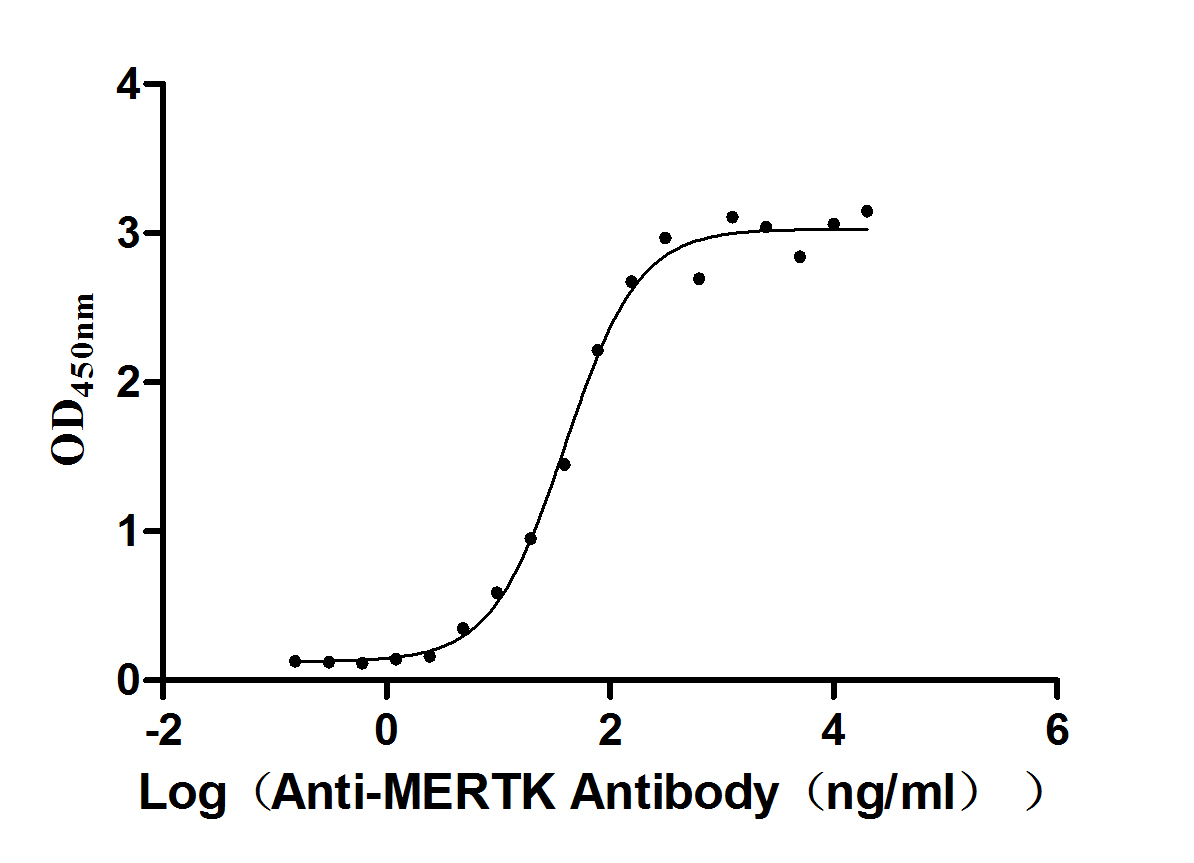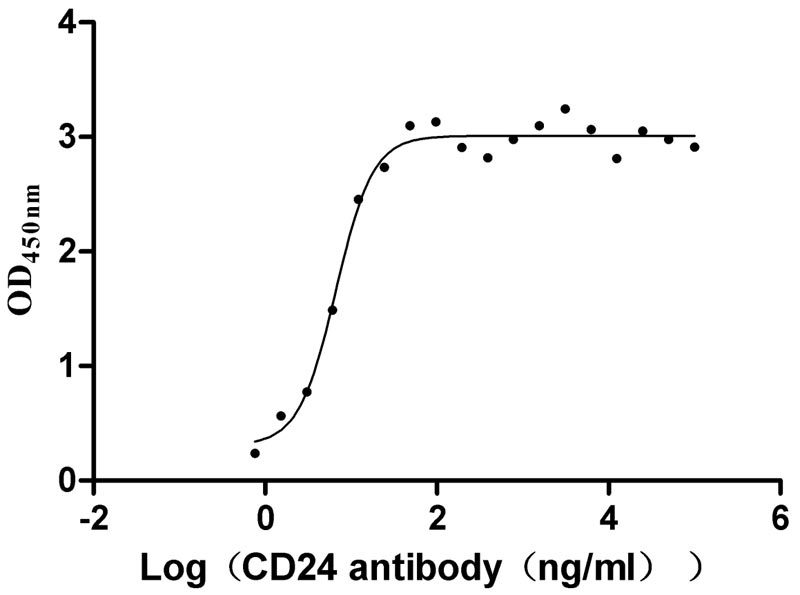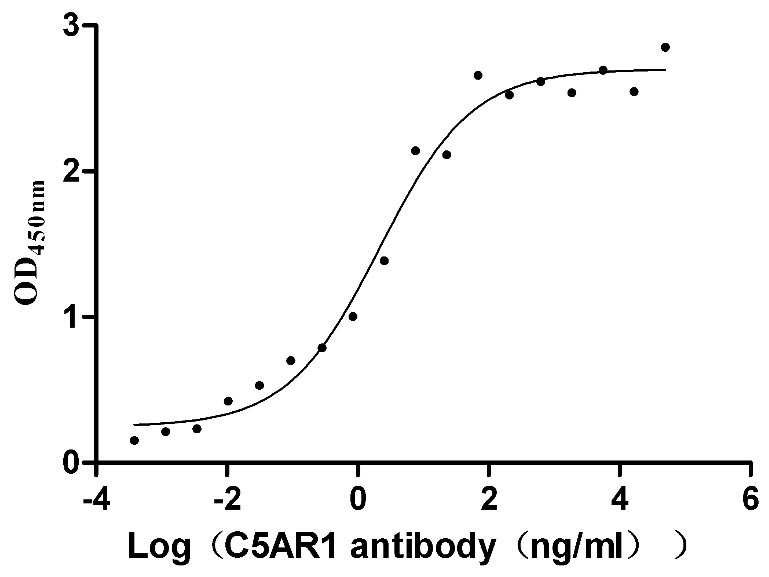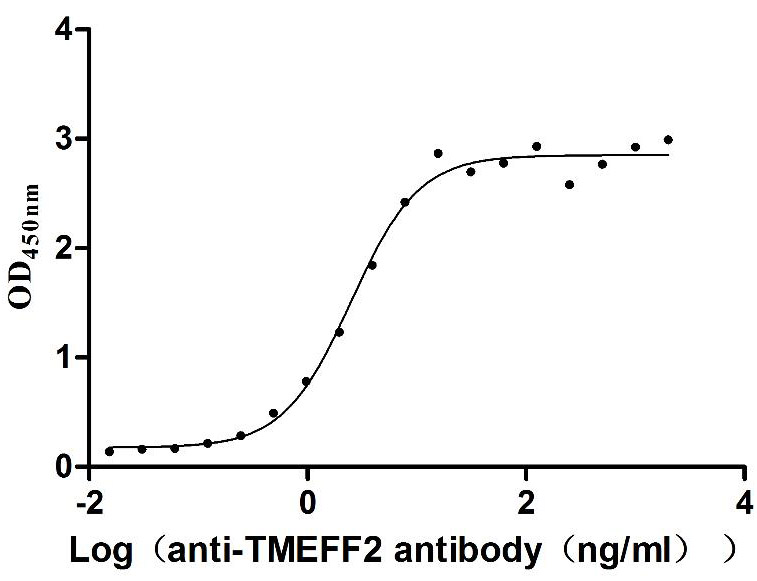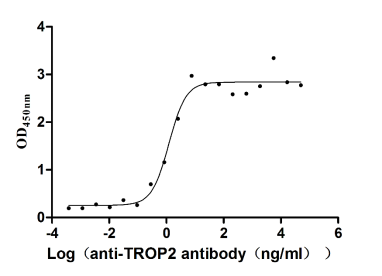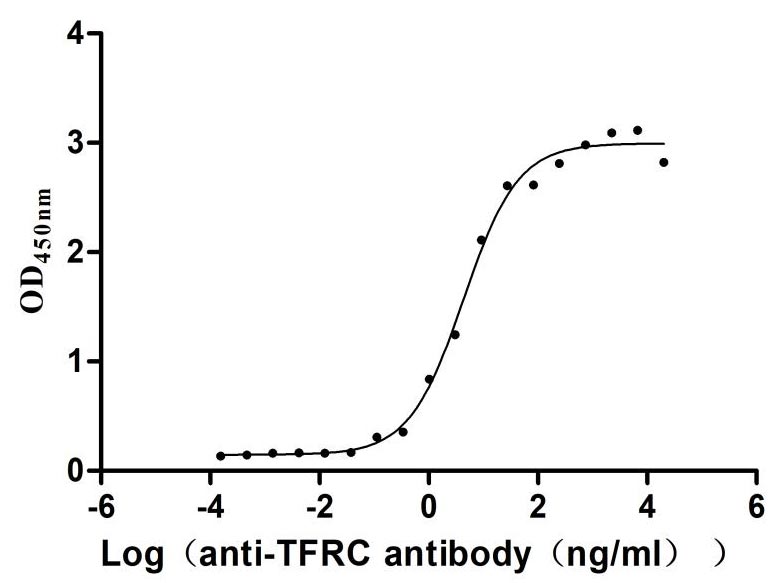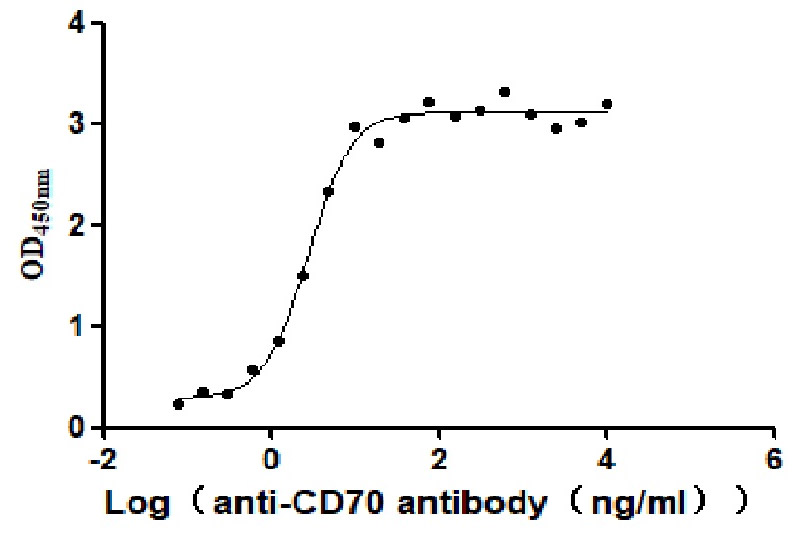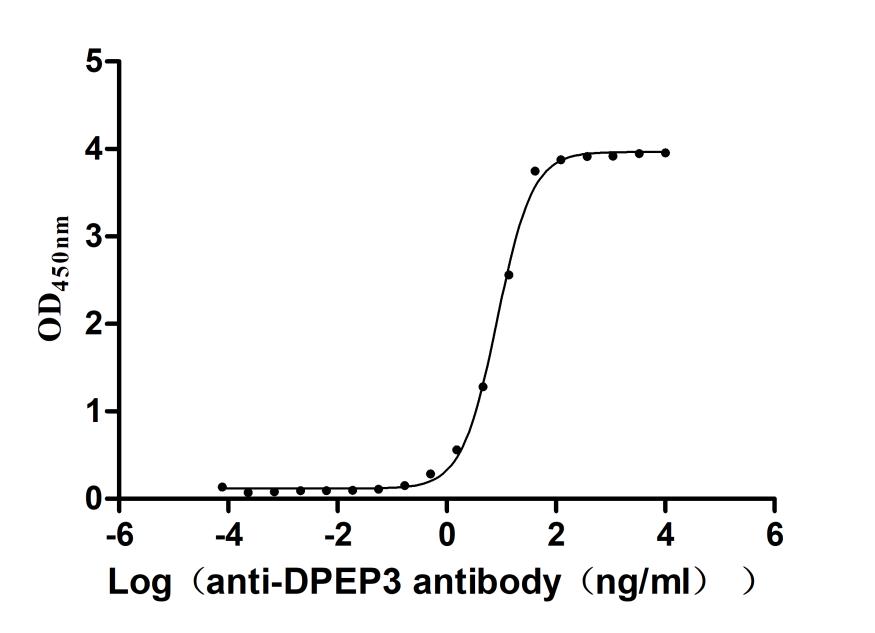Recombinant Human Histone deacetylase 9 (HDAC9), partial
-
中文名称:人HDAC9重组蛋白
-
货号:CSB-YP010245HU
-
规格:
-
来源:Yeast
-
其他:
-
中文名称:人HDAC9重组蛋白
-
货号:CSB-EP010245HU
-
规格:
-
来源:E.coli
-
其他:
-
中文名称:人HDAC9重组蛋白
-
货号:CSB-EP010245HU-B
-
规格:
-
来源:E.coli
-
共轭:Avi-tag Biotinylated
E. coli biotin ligase (BirA) is highly specific in covalently attaching biotin to the 15 amino acid AviTag peptide. This recombinant protein was biotinylated in vivo by AviTag-BirA technology, which method is BriA catalyzes amide linkage between the biotin and the specific lysine of the AviTag.
-
其他:
-
中文名称:人HDAC9重组蛋白
-
货号:CSB-BP010245HU
-
规格:
-
来源:Baculovirus
-
其他:
-
中文名称:人HDAC9重组蛋白
-
货号:CSB-MP010245HU
-
规格:
-
来源:Mammalian cell
-
其他:
产品详情
-
纯度:>85% (SDS-PAGE)
-
基因名:HDAC9
-
Uniprot No.:
-
别名:HD 7; HD 7B; HD 9; HD7; HD7B; HD9; HDAC 7; HDAC 7B; HDAC 9; HDAC 9B; HDAC 9FL; HDAC; HDAC7; HDAC7B; HDAC9; HDAC9_HUMAN; HDAC9B; HDAC9FL; HDRP; Histone deacetylase 4/5 related protein; Histone deacetylase 7; Histone deacetylase 7B; Histone deacetylase 9; Histone deacetylase 9A ; Histone deacetylase related protein; Histone deacetylase-related protein; KIAA0744; MEF2 interacting transcription repressor MITR; MEF2 interacting transcription repressor protein; MEF2-interacting transcription repressor MITR; MITR
-
种属:Homo sapiens (Human)
-
蛋白长度:Partial
-
蛋白标签:Tag type will be determined during the manufacturing process.
The tag type will be determined during production process. If you have specified tag type, please tell us and we will develop the specified tag preferentially. -
产品提供形式:Lyophilized powder
Note: We will preferentially ship the format that we have in stock, however, if you have any special requirement for the format, please remark your requirement when placing the order, we will prepare according to your demand. -
复溶:We recommend that this vial be briefly centrifuged prior to opening to bring the contents to the bottom. Please reconstitute protein in deionized sterile water to a concentration of 0.1-1.0 mg/mL.We recommend to add 5-50% of glycerol (final concentration) and aliquot for long-term storage at -20℃/-80℃. Our default final concentration of glycerol is 50%. Customers could use it as reference.
-
储存条件:Store at -20°C/-80°C upon receipt, aliquoting is necessary for mutiple use. Avoid repeated freeze-thaw cycles.
-
保质期:The shelf life is related to many factors, storage state, buffer ingredients, storage temperature and the stability of the protein itself.
Generally, the shelf life of liquid form is 6 months at -20°C/-80°C. The shelf life of lyophilized form is 12 months at -20°C/-80°C. -
货期:Delivery time may differ from different purchasing way or location, please kindly consult your local distributors for specific delivery time.Note: All of our proteins are default shipped with normal blue ice packs, if you request to ship with dry ice, please communicate with us in advance and extra fees will be charged.
-
注意事项:Repeated freezing and thawing is not recommended. Store working aliquots at 4°C for up to one week.
-
Datasheet :Please contact us to get it.
相关产品
靶点详情
-
功能:Responsible for the deacetylation of lysine residues on the N-terminal part of the core histones (H2A, H2B, H3 and H4). Histone deacetylation gives a tag for epigenetic repression and plays an important role in transcriptional regulation, cell cycle progression and developmental events. Represses MEF2-dependent transcription.; Isoform 3 lacks active site residues and therefore is catalytically inactive. Represses MEF2-dependent transcription by recruiting HDAC1 and/or HDAC3. Seems to inhibit skeletal myogenesis and to be involved in heart development. Protects neurons from apoptosis, both by inhibiting JUN phosphorylation by MAPK10 and by repressing JUN transcription via HDAC1 recruitment to JUN promoter.
-
基因功能参考文献:
- This study highlights HDAC9 as a mediator of cell invasion and angiogenesis in Triple negative breast cancer (TNBC) cells through VEGF and MAPK3 by modulating miR-206 expression and suggests that selective inhibition of HDAC9 may be an efficient route for TNBC therapy. PMID: 29936177
- the T allele of rs2107595 in HDAC9 increases the risk of stroke but that the G allele of rs2389995 decreases the risk of stroke in the Chinese population (Meta-Analysis) PMID: 28145521
- HDAC9 may be a new indicator for assessing chronic heart failure. PMID: 30074176
- HDAC9 may be involved in the process of diabetic nephropathy. PMID: 27633396
- HDAC9, in cooperation with BRG1 and MALAT1, mediates a critical epigenetic pathway responsible for vascular smooth muscle cells dysfunction. PMID: 29520069
- M4 macrophages are a possible source for HDAC9 and MMP12 expression in advanced human carotid plaques. PMID: 28343758
- HDAC9 is an important epigenetic factor regulating ox-LDL-induced endothelial cell apoptosis and inflammatory factor expression. PMID: 27100479
- decline in HDAC9c expression over time was accompanied by increased EZH2 expression. PMID: 27250566
- HDAC9 might contribute to lymphomagenesis by altering pathways involved in growth and survival, as well as modulating BCL6 activity and p53 tumor suppressor function. PMID: 27799148
- post-translational modification of Nkx3.2 employing HDAC9-PIASy-RNF4 axis plays a crucial role in controlling chondrocyte viability and hypertrophic maturation during skeletal development in vertebrates. PMID: 27312341
- Data show that the gene encoding the transcription factor SOX9 was identified by a global transcriptomic approach as an HDAC9 target gene. PMID: 26930713
- The minor allele A of SNP rs2107595 increased coronary artery disease risk and the severity of coronary atherosclerosis in a Chinese Han population. PMID: 27494404
- in leiomyosarcomas (LMS), this two-faced trait of MEF2 is relevant for tumor aggressiveness. Class IIa HDACs are overexpressed in 22% of LMS, where high levels of MEF2, HDAC4 and HDAC9 inversely correlate with overall survival. The knock out of HDAC9 suppresses the transformed phenotype of LMS cells, by restoring the transcriptional proficiency of some MEF2-target loci PMID: 28419090
- Based on this study, it is suggested that HDAC9 regulates the formation of APBs and could be a candidate for the target of ALT-cancer therapy. PMID: 27833022
- PC3/Tis21 associates with HDAC1, HDAC4, and HDAC9 in vivo, in fibroblast cells. PMID: 27333946
- HDAC9 is a target of miR-377 in oral squamous cell carcinoma. PMID: 28267394
- Studied HDAC9 gene's association with an increased susceptibility to acute coronary syndrome (ACS) in Chinese Han population. The results revealed a significant association of rs2240419 with ACS risk in which the A allele (P = 0.047) and the A allele carriers (AA + AG) (P = 0.037) were more likely to be in ACS group as compared to those in the control group. PMID: 27642596
- Downregulation of HDAC9 promotes gliomas. PMID: 27495233
- overexpression of HDAC9 contributes to OSCC carcinogenesis via targeting a transcription factor, MEF2D, and NR4A1/Nur77, a pro-apoptotic MEF2 target PMID: 26992905
- The aurora kinase A inhibited by MLN 8054 are both implicated in cell cycle progression and, thus, in cellular proliferation.Epigenetic regulators were targeted by SAHA inhibiting HDACs and by DZNep inhibiting the histone methyltransferase EZH2, which silences genes by trimethylating histone H3K27.Combinations of small molecular inhibitors act synergistically in rhabdoid tumor PMID: 27466490
- These results highlighting the significant correlation between TWIST and HDAC9 gene expression suggest that both genes may contribute to plaque stability in a coordinated way PMID: 26621503
- Polymorphisms of HDAC9 is associated with Ischemic Stroke. PMID: 26347468
- The results imply that HDAC9 is involved in the transcriptional regulation of human odontoblasts in vivo. PMID: 22297573
- HDAC9 was commonly expressed in retinoblastoma tissues and HDAC9 was overexpressed in prognostically poor retinoblastoma patients. PMID: 27033599
- HDAC9 promotes tumor formation of glioblastoma via TAZ-mediated EGFR pathway activation. PMID: 25760078
- the results of this study suggest that targeting HDACs by ST-3595 might represent as a novel and promising anti-pancreatic cancer strategy. PMID: 26084607
- results indicate that HDAC9 variant rs2107595 may be not associated with IS risk in southern Han Chinese PMID: 26093197
- Data show that miR-376a and HDAC9 expression are inversely correlated in hepatocellular carcinoma and suggest that HDAC9-mediated epigenetic modification may contribute to the down-regulation of the miR-376 cluster in hepatocellular carcinoma. PMID: 25613642
- Gene expression studies in peripheral blood mononuclear cells revealed increased mRNA levels of HDAC9. Analysis of human atherosclerotic plaques revealed no association between rs2107595 and specific plaque characteristics. PMID: 25388417
- The hydroxamic acid pan-HDAC inhibitor TSA synergistically inhibit the viability. PMID: 24562770
- The results elucidate the genetic etiology of lung adenocarcinoma by demonstrating that SNP rs10248565 in the HDAC9 gene may be a potential biomarker of cancer susceptibility. PMID: 24650256
- These results suggest that HDAC9 may be a suppressor and its downregulation might promote the progression process, especially in lung adenocarcinomas. PMID: 24427341
- study reports gene expression in skeletal muscle tissue of women with metabolic syndrome is enriched in inflammatory response-related genes; IL6R, HDAC9 and CD97 expression correlated negatively with insulin sensitivity; suggests a role for these 3 inflammatory genes in development of skeletal muscle insulin resistance in women PMID: 23771909
- These data suggest that HDAC9 variants may be selected for during cutaneous squamous cell carcinoma tumorigenesis PMID: 23784969
- In vivo sorafenib + HDAC inhibitor toxicity against tumors was increased. PMID: 23674352
- HDAC9 gene is significantly associated with large-vessel stroke risk in Chinese population. PMID: 23828597
- We propose that CtBP2 is an ovarian cancer oncogene that regulates gene expression program by modulating HDAC activity. PMID: 22945647
- SNP, rs12155400, in the histone deacetylase 9 gene (HDAC9) on chromosome 7, was associated with retinopathy in analysis of participants without hypertension PMID: 23393555
- Our results are consistent with the 7p21.1 association acting via promoting atherosclerosis, and consistent with alterations in HDAC9 expression mediating this increased risk. PMID: 23449258
- Regression models consistently identified rs2522129, rs2675231, and rs2389963 as having among the highest predictive values for explaining differences related to brain volume measures PMID: 22884548
- Dephosphorylation at a conserved SP motif governs cAMP sensitivity and nuclear localization of class IIa histone deacetylases HDAC4, 5 and 9 PMID: 23297420
- HDAC9 promotes angiogenesis and transcriptionally represses the endothelial cell miR-17-92 cluster. PMID: 23288173
- LBH589 and TSA may translationally regulate some HDAC encoding genes in pancreatic tumors. PMID: 22487525
- Data indicate a pronounced deregulation of HDAC genes HDAC9 and HDAC11 in patients with Philadelphia-negative chronic myeloproliferative neoplasms: essential thrombocythemia (ET), polycythemia vera (PV) and primary myelofibrosis (PMF). PMID: 21806350
- We identified a new association for large vessel stroke within HDAC9 on chromosome 7p21.1. PMID: 22306652
- Treated the seminoma-like cell line TCam-2 with the HDAC-inhibitor Depsipeptide. PMID: 21987446
- The results show that hdac9 is the third androgenic alopecia susceptibility gene PMID: 22032556
- HDAC9 acts as an epigenetic switch in effector T cell-mediated systemic autoimmunity. PMID: 21708950
- HDAC suppresses the activation of PPARgamma in the gastric carcinoma cell line SGC-7901. PMID: 19624894
- MITR plays a master switch role to balance osteogenic and adipogenic differentiation of MSCs through regulation of PPARgamma-2 transcriptional activity. PMID: 21247904
显示更多
收起更多
-
相关疾病:A chromosomal aberration involving HDAC9 is found in a family with Peters anomaly. Translocation t(1;7)(q41;p21) with TGFB2 resulting in lack of HDAC9 protein.
-
亚细胞定位:Nucleus.
-
蛋白家族:Histone deacetylase family, HD type 2 subfamily
-
组织特异性:Broadly expressed, with highest levels in brain, heart, muscle and testis. Isoform 3 is present in human bladder carcinoma cells (at protein level).
-
数据库链接:
Most popular with customers
-
Recombinant Human Tyrosine-protein kinase Mer (MERTK), partial (Active)
Express system: Mammalian cell
Species: Homo sapiens (Human)
-
Recombinant Human Signal transducer CD24 (CD24)-Nanoparticle (Active)
Express system: Mammalian cell
Species: Homo sapiens (Human)
-
Recombinant Human C5a anaphylatoxin chemotactic receptor 1 (C5AR1)-VLPs (Active)
Express system: Mammalian cell
Species: Homo sapiens (Human)
-
Recombinant Human Tomoregulin-2 (TMEFF2), partial (Active)
Express system: Mammalian cell
Species: Homo sapiens (Human)
-
Recombinant Human Tumor-associated calcium signal transducer 2 (TACSTD2), partial (Active)
Express system: Mammalian cell
Species: Homo sapiens (Human)
-
Recombinant Human Transferrin receptor protein 1 (TFRC), partial (Active)
Express system: Mammalian cell
Species: Homo sapiens (Human)
-
Recombinant Human CD70 antigen (CD70), partial (Active)
Express system: Mammalian cell
Species: Homo sapiens (Human)
-
Recombinant Macaca fascicularis Dipeptidase 3(DPEP3) (Active)
Express system: Mammalian cell
Species: Macaca fascicularis (Crab-eating macaque) (Cynomolgus monkey)


